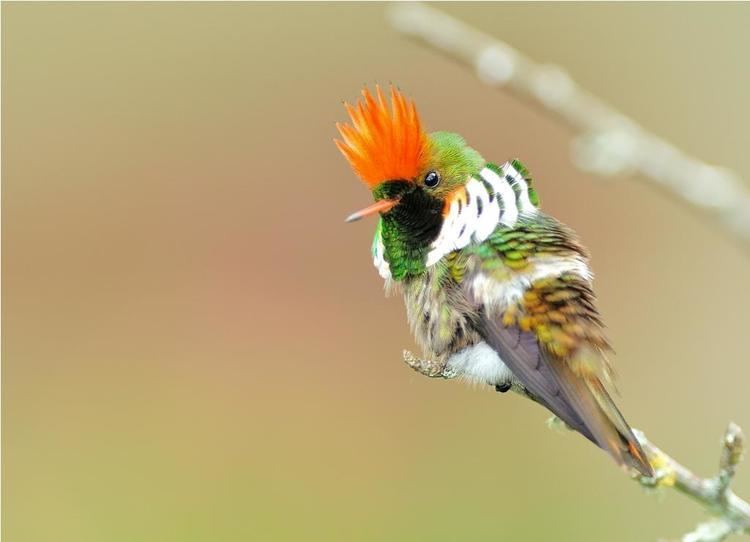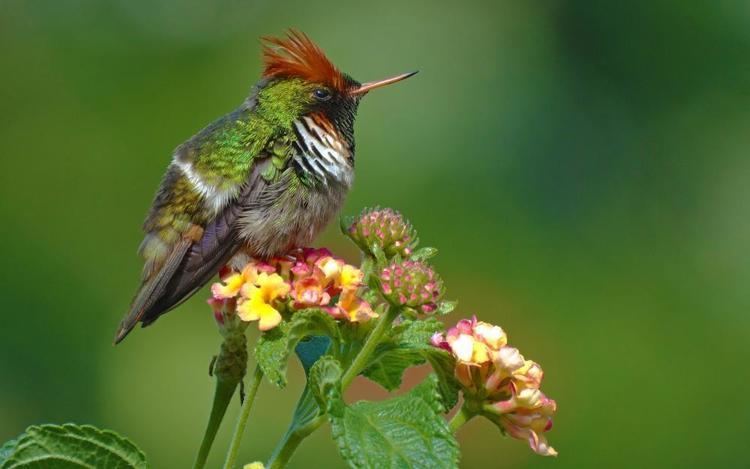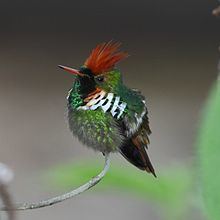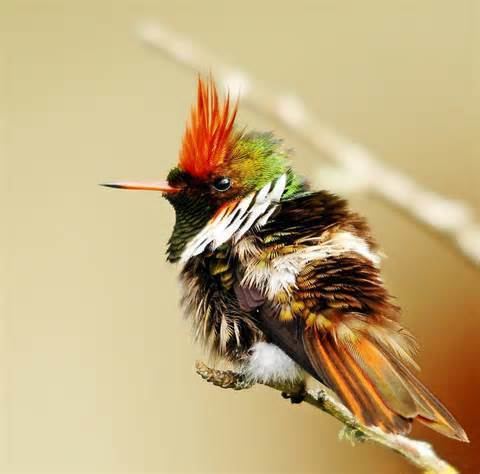Higher classification Lophornis | Phylum Chordata Family Trochilidae Scientific name Lophornis magnificus Rank Species | |
 | ||
Similar Lophornis, Bird, Hummingbird, Tufted coquette, Dot‑eared coquette | ||
Frilled coquette
The frilled coquette (Lophornis magnificus) is a species of hummingbird in the family Trochilidae.
Contents
Etymology

The genus name derives from the Greek words "lophos λοφος"meaning "crest, tuft, forelock" and "ornis ορνις", " meaning bird. The species name "magnificus" is the Latin word for "magnificent, splendid".
Description

Lophornis magnificus is one of the smallest birds alive. This hummingbird can reach a length of 6.5 to 7 cm (2.6 to 2.8 in) and a weight of 2.1 g (0.074 oz).

The males of this striking bird have a long, rufous-orange erectile crest and green and white fan-shaped cheek feathers. The forehead and throat are iridescent green, which in certain lights look black. The female is duller in color than the male and lacks the crest and the fanning cheek feathers. Both sexes have a coppery green back with a whitish rump band. The tail is golden rufous. The underparts are whitish-greenish. The inner half of the bills is red, while the tip is black. These short, thin, straight bills has a long tongue used to eat nectar.
Biology

These hummingbirds feed on small arthropods and on the nectar of small flowers (mainly Cirus, Delphinium and Duranta arborensis.

In the mating season (August–March) the males follow the females until they slow their flight. After that both birds are facing and flapping their wings up and down. The cup-shaped nest, which is located close to the ground, is made of parts of plants, moss and bark, camouflaged with green and whitish lichens and silk threads of spiders.
Distribution
This species has an extremely large range, but can be found only in Brazil.
Habitat
Its natural habitats are subtropical or tropical moist lowland Atlantic forests, coffee plantations and heavily degraded former forest, at an elevation up to 1,000 metres (3,300 ft) above sea level.
